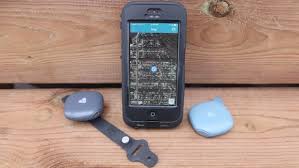
Breaking News
 LIVE ELECTION RESULTS: New York mayor, NJ & VA governor, Prop 50, Trump endorsements, latest vote
LIVE ELECTION RESULTS: New York mayor, NJ & VA governor, Prop 50, Trump endorsements, latest vote
 Sen. Markwayne Mullin Reveals Schumer Held Secret BACKROOM MEETING...
Sen. Markwayne Mullin Reveals Schumer Held Secret BACKROOM MEETING...
 RIP NYC - Muslim Communist Zohran Mamdani Wins New York City Mayoral Race
RIP NYC - Muslim Communist Zohran Mamdani Wins New York City Mayoral Race
 Dramatic Footage Shows UPS Cargo Jet Crashing At Louisville Airport
Dramatic Footage Shows UPS Cargo Jet Crashing At Louisville Airport
Top Tech News
 Japan just injected artificial blood into a human. No blood type needed. No refrigeration.
Japan just injected artificial blood into a human. No blood type needed. No refrigeration.
 The 6 Best LLM Tools To Run Models Locally
The 6 Best LLM Tools To Run Models Locally
 Testing My First Sodium-Ion Solar Battery
Testing My First Sodium-Ion Solar Battery
 A man once paralyzed from the waist down now stands on his own, not with machines or wires,...
A man once paralyzed from the waist down now stands on his own, not with machines or wires,...
 Review: Thumb-sized thermal camera turns your phone into a smart tool
Review: Thumb-sized thermal camera turns your phone into a smart tool
 Army To Bring Nuclear Microreactors To Its Bases By 2028
Army To Bring Nuclear Microreactors To Its Bases By 2028
 Nissan Says It's On Track For Solid-State Batteries That Double EV Range By 2028
Nissan Says It's On Track For Solid-State Batteries That Double EV Range By 2028
 Carbon based computers that run on iron
Carbon based computers that run on iron
 Russia flies strategic cruise missile propelled by a nuclear engine
Russia flies strategic cruise missile propelled by a nuclear engine
 100% Free AC & Heat from SOLAR! Airspool Mini Split AC from Santan Solar | Unboxing & Install
100% Free AC & Heat from SOLAR! Airspool Mini Split AC from Santan Solar | Unboxing & Install
Review: Findster Duo Plus offers fee-free GPS pet-tracking

The less-expensive Bluetooth devices are attached to the dog's collar, with an app subsequently showing the user which direction to go in order to find the animal. Unfortunately, though, these devices have quite a short range – usually no more than about 200 ft (61 m).
GPS pet-trackers also get attached to the collar, then proceed to continuously acquire and transmit their geographical coordinates via a cellular signal. Utilizing an app, users can track the location of their dog from anywhere there's coverage. The downside, however, is that monthly data fees are required.
The Findster system is likewise GPS-based, although it requires no cellular service. Along with an iOS/Android app, it consists of a collar-worn Pet module, and a Guardian module which the user carries with them. Utilizing the company's MAZE technology, the Pet module independently acquires its GPS coordinates, but then uses an ISM-band radio signal to continuously transmit that data to the Guardian. That module in turn uses Bluetooth to relay the information to the app.
On that app, users see the relative locations of the Guardian and the Pet modules on a satellite map of the area – in other words, the locations of themselves and their dog. They can then set out to reclaim their critter, with the positions of the modules being updated on the map as both parties move around.



